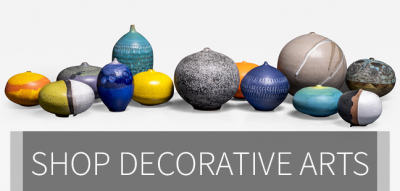Tony Moxham and Mauricio Paniagua Redefine the Funeral Urn
The terms bold, playful, and exuberant don’t typically enter the mix when discussing funerary practices. But a series of urns created by Tony Moxham and Mauricio Paniagua challenges the notion that lively design is reserved solely for the living. According to Moxham, “With these objects we saw a way to create work that was both decorative and utilitarian, although the utilitarian aspect of the pieces also necessitates death having to occur. For us, the morbid connection between design and death was a fascinating one, as is the connection between function and decoration—once a funeral urn is filled, it's function, ironically, becomes purely decorative and symbolic.”
Moxham and Paniagua, who are based in Mexico City, drew inspiration for their richly-hued vessels from pre-Hispanic culture and design, archaeology, magic, and legend. The urns’ exaggerated proportions were influenced by the Mayan burial figurines from the Yucatan gulf-coast island of Jaina, while their spiky decorations reference the ceiba tree—a sacred plant honored by the Maya people as a ladder between spiritual levels. Comedy and humor in both pre-Hispanic and contemporary cultures also helped shape the vessels' unconventional forms. Moxham says, “[We didn’t see] any reason for a vessel holding the ashes of the dead to necessarily look either inanimate, subtle, or understated in any way. If you look at traditional pre-Hispanic funeral urns, their design tends to be brash, narcissistic, egotistical, and heavily symbolic. We feel our funeral urns fulfill a similar functional, decorative, and symbolic role.”
Moxham and Paniagua work with a small group of skilled artisans at their Mexico City ceramic factory, Cerámica La Mejor, to bring their designs to fruition. Moxham says, “All of our objects are first sketched on paper, after which individual elements are then hand-cast. We work in low-fired ceramic, as it holds its shape better with complex forms. Every single element is then laboriously hand-applied to its core form while everything is still fresh—a process that differs very little from how similar pre-hispanic vessels and objects would have been made.”
Moxham and Paniagua, who founded the design brand DFC in 2006, have released their collection of funeral urns under MT Objects—a new line of ceramics inspired by pre-Hispanic and contemporary design. The elegant and innovative vessels are available at Mexico City’s esteemed ADN Galería, which specializes in historical and contemporary design and has played a pivotal role in helping Mexican design break into the international scene.































